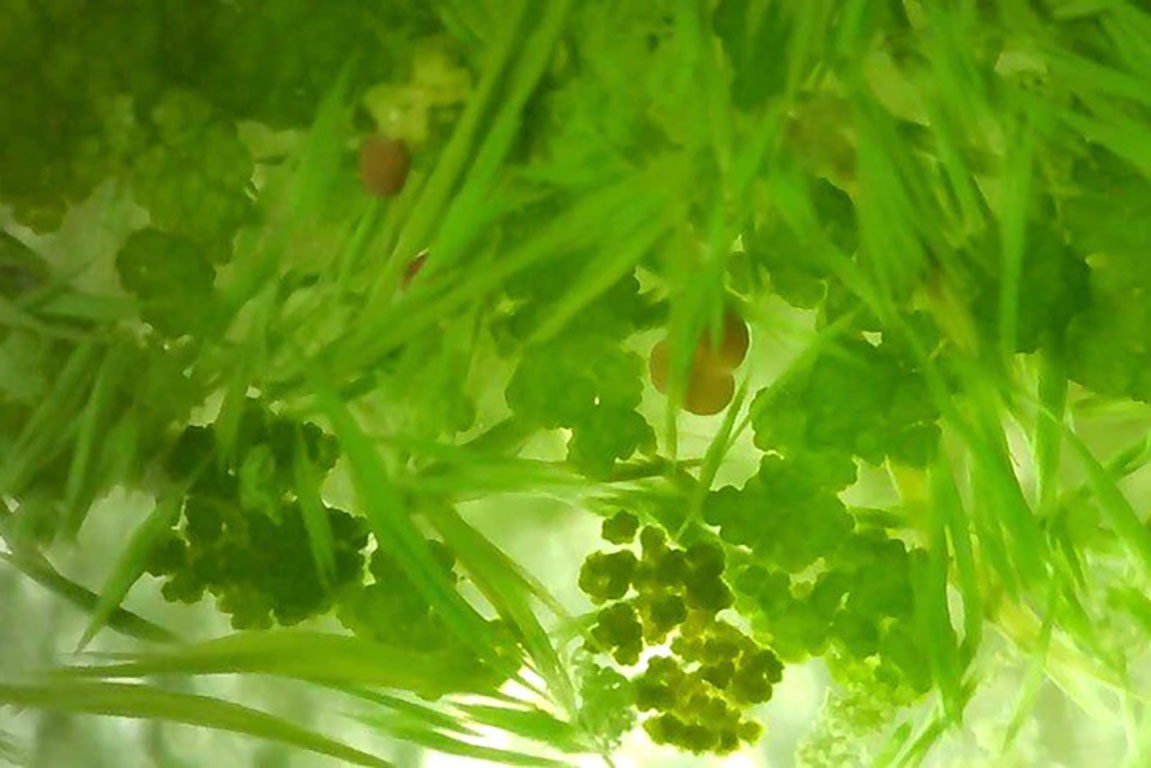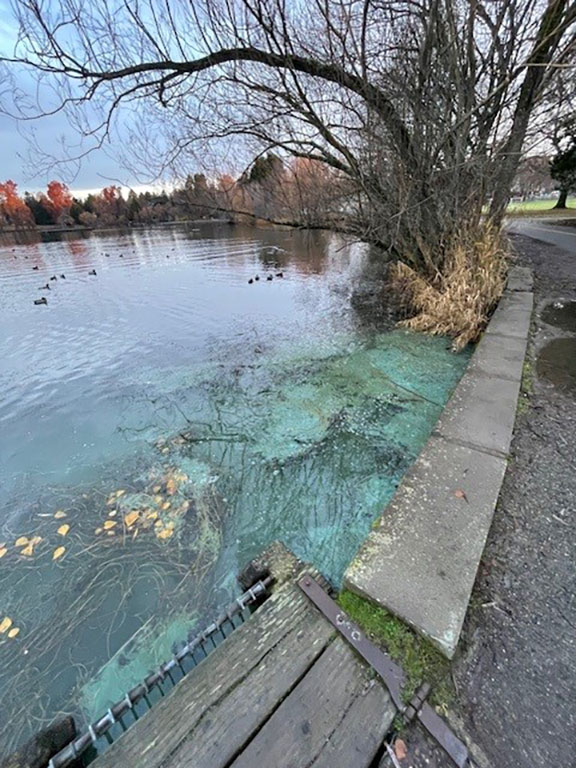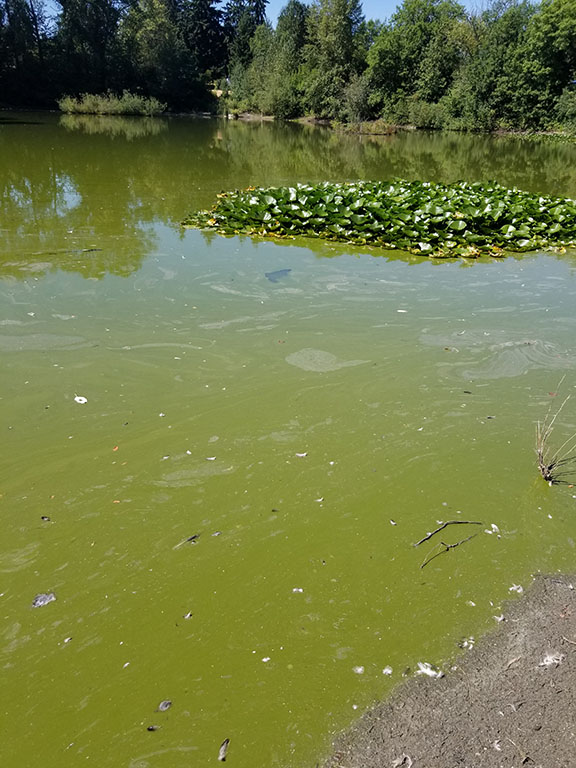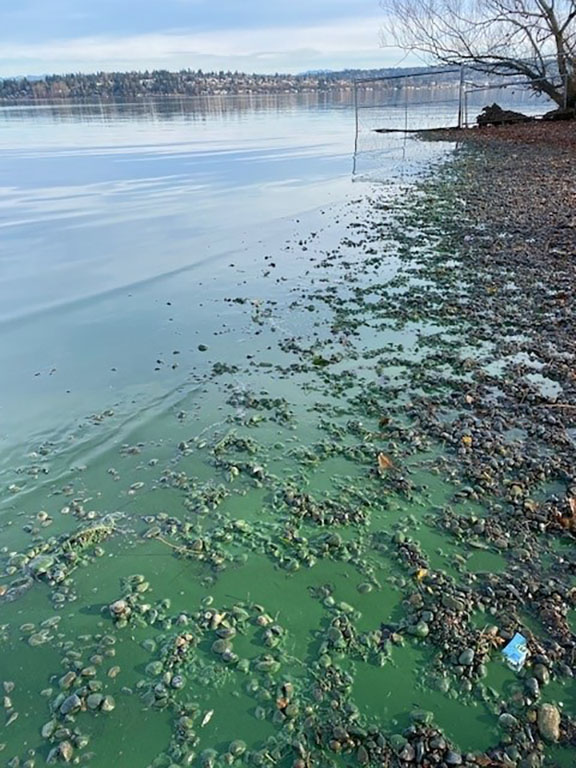Toxic algae
Learn about cyanobacteria and harmful algae blooms in King County lakes.
What is toxic algae?
Algae is a natural part of a freshwater ecosystem, and is necessary for aquatic life to thrive in streams, rivers, and lakes. Cyanobacteria, or blue-green algae, is a type of bacteria that is similar to other types of algae. Cyanobacteria can produce toxins that may be dangerous to people and animals. When cyanobacteria grow excessively, forming a "bloom," this danger may increase.
Where can I find results for toxic algae testing in King County?
You can find toxin analysis results from lakes and other water bodies around Washington State at www.nwtoxicalgae.org. You can also check our swimming beach conditions web page for information about lakes in King County that are currently experiencing toxic algae blooms.
What does toxic algae look like?
Cyanobacteria can be hard to identify just by sight, but there are some characteristics that are more common.
The color may be green, olive, blue-green, or brown. The texture may appear filmy, cloudy, or clumpy, and may form streaks in the water or along the shoreline.
Typically it requires a trained eye to look at algae under a microscope to determine if it's cyanobacteria. Green algae blooms are common in King County and may be mistaken for cyanobacteria (blue-green algae). Other things that may look like cyanobacteria blooms include small plants, pollen, or golden algae (which does not produce toxins). There are a couple of simple tests you can do at home to help determine if what you're seeing in the water might be cyanobacteria.
The quickest and easiest is the “stick test”. If there’s a surface mat or scum, poke a stick into the algae and lift it out. If the stick pulls up strands that look like green hair or thread, it’s probably non-toxic filamentous green algae. If the stick looks like you dipped it into paint, it might be cyanobacteria.
You can also try the “jar test”. If you collect some of the algae in a quart-sized jar and put it in the fridge overnight, non-toxic green algae will settle to the bottom, but cyanobacteria will float and form a ring at the top of the jar.
I think I see cyanobacteria in the water, now what?
If you think you have found cyanobacteria, or have further questions, you can reach out to us by emailing lakes@kingcounty.gov, or calling the Department of Natural Resources front desk at 206-477-4800. We can work with you to determine if what you're seeing in the water might be cyanobacteria, and we can help you get the water tested if needed. The King County Environmental Lab, in partnership with the Washington State Department of Ecology, are able to test cyanobacteria blooms for the presence of some common algal toxins. And remember, "when in doubt, stay out!"

 Translate
Translate





